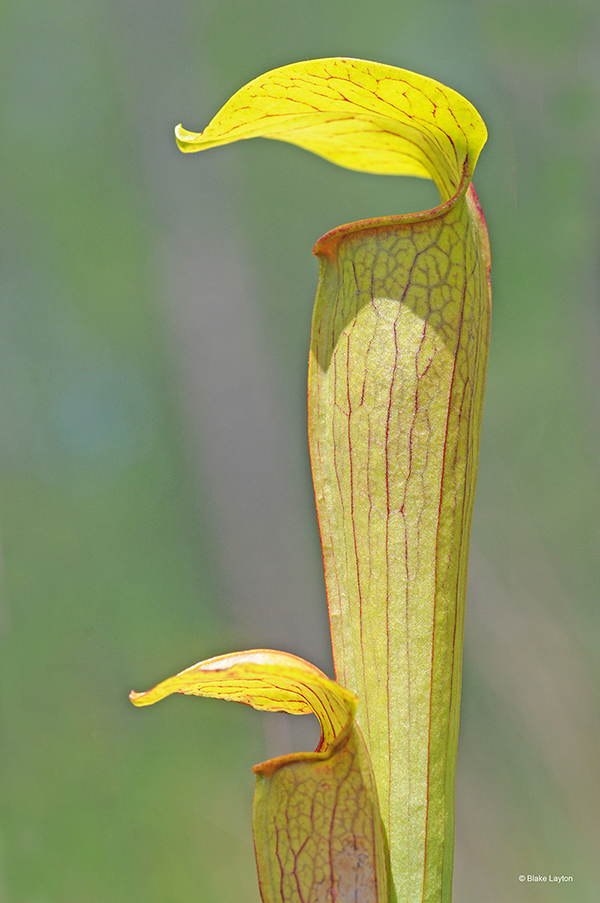Bug's Eye View, Pitcher Plants, Vol. 4, No. 20

Sarracenia alata
Family: Sarraceniaceae
Usually, it’s the insects that eat the plants and not the other way around. But pitcher plants are one of four types of native plants that capture and “eat” insects to supplement their nutritional needs. Most carnivorous plants grow in boggy soils that are acidic and low in available nutrients. These sites are most common in the pine savannas of the southern part of the state.
Pitcher plants use a combination of odor, visual cues, and extrafloral nectaries to attract insects to the opening of their tube-shaped leaves. Once an insect ventures too far inside it encounters stiff, downward pointing hairs and slippery footing, causing it to fall into the fluid in the bottom of the tube, where it is slowly digested. Notice the hood-like cover over the openings of the plants in the photo. This keeps rainwater from entering the tube and diluting the digestive fluid.
Surprisingly, one species of mosquito is able to live in this fluid that is so hostile to most insects. In fact, larvae of the pitcher plant mosquito can only live in this habitat. They don’t harm the pitcher plant and the pitcher plant does not harm them. Actually, this is a mutualistic arrangement. The mosquito larvae get to live in a relatively predator free environment and their excrement and shed skins ultimately provide nutrition to the plant.
There are some insects that eat these insect-eating plants. Caterpillars of pitcher plant moths, Exyra spp., specialize in feeding on pitcher plant leaves, usually feeding on the inside of the tube without feeding all the way through the outer epidermis of the leaf. The adult moths enter the tubes to deposit their eggs and often rest inside the tubes, using them for shelter. The moths and their caterpillars are specially adapted to be able to navigate the inner surface of the tube, which is so treacherous to most insects.
Crosby Arboretum in Picayune is one of several places in the state where you can easily observe many of the carnivorous plants native to our state. Here you can see two species of pitcher plants, as well as sundews and butterworts. Pitcher plants and other carnivorous plants can also be found in pine savanna bogs in the Mississippi Sandhill Crane National Wildlife Refuge near Gauthier. Desoto National Forest contains a number of such bogs, such as Buttercup Flats, located near Wiggins, MS.
Blake Layton, Extension Entomology Specialist, Mississippi State University Extension Service.
The information given here is for educational purposes only. Always read and follow current label directions. Specific commercial products are mentioned as examples only and reference to specific products or trade names is made with the understanding that no discrimination is intended to other products that may also be suitable and appropriately labeled.

